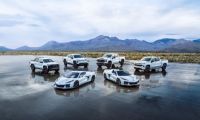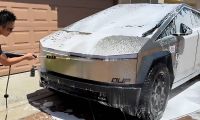It may be too early to know that for certain, but I’ll return to that topic later after I dive into the numbers. Regardless, Kia’s sales numbers for last month look very promising. Particularly impressive are its continued expansion of electrified model sales, up 151 percent, YOY. Following Kia’s July lower YOY sales (which still saw electrified vehicles sales up by 86 percent), August’s sales figures also indicate which Kia models are struggling a bit with sales.
Let’s dig into the numbers a little. Kia’s total U.S. sales for August were 66,089 units, which is up 22 percent compared to August 2021, a healthy increase. However, when you look at Kia’s U.S. year-to-date (YTD) sales for 2022 compared to 2021, you’ll notice that sales are actually down almost 9 percent compared to this point last year (461,878 vs. 502,619). Still, that is an improvement over July’s YTD cumulative sales, which were down about 12 percent compared to 2021 YTD. So from just those figures and trends we might conclude that Kia is starting to turn the corner on pandemic and other geopolitical pressures on their supply chain.
Digging in further, looking at individual model sales, we can see that negative trends predominate, so far, for most Kia models which makes sense given that overall sales are down about 9 percent. Here’s how things break down: the Kia EV6 is a new model for 2022, so it has no YOY comparison, but month-over-month EV6 sales are up (1,840 for August vs, 1,716 for July, up a little over 7%). In truth, EV6 sales are lower, recently, compared to earlier this year, and it will be very interesting to see what they look like for the rest of the year considering that in August Kia, and many other automakers, lost eligibility for U.S. federal tax credits. If they continue at about their current level, or increase, then we might deduce that the loss of the incentive hasn’t had a big impact. If they go down significantly for the remainder of the year, it may be easy to correlate that to the loss of incentives.
Other sales data shows that except for the Niro (which comes in hybrid (HEV), plug-in hybrid (PHEV), and EV models), Sportage (which includes HEV and PHEV models), and Telluride, all the rest of Kia’s model sales are at least slightly down, YOY. The all new and completely redesigned 2023 Niro is about to go on sale, and this may explain why Niro sales are both up YOY to date, and down significantly by month; Kia is clearing out the last of its 2022 models to make way for the 2023’s. I would expect Niro sales to begin climbing for the remainder of the year, though perhaps dominated by HEV model sales. The Sportage is also Kia’s top-selling model for the fifth consecutive month, with a 59 percent increase YOY. This is a pretty good indication of customer approval of the new Sportage design and capabilities (the addition of both HEV and PHEV models). Of course Kia doesn’t break out the sales of their HEV and PHEV models from their non-hybrid versions, but I estimated sales trends for Kia’s hybrid models for 2022 previously and I still expect that I am reasonably close. The majority of Kia’s YOY electrified vehicle sales growth to date must be coming from the EV6, since it is new to the U.S. market for 2022 and is selling well. I would conservatively say that the EV6 alone is responsible for about ½ - ⅔ of Kia’s growth in this segment, possibly more. Yes, the Sportage HEV, Sportage PHEV, Sorento HEV, and Sorento PHEV are in high demand and Kia, at least through August, is selling them as fast as they can get them on the lots, but numbers likely lag those of the EV6. I predict it will be the 2023 Niro, combined with more or less steady sales of the EV6, that will drive Kia’s electrified sales numbers for the duration of the year, with HEV versions gaining in share, possibly to the detriment of Kia’s plug-in vehicles due to the loss of the federal tax credit. How much gasoline costs for the rest of the year will have an impact too, I expect, and how much/whether Kia dealers may mark up their electrified models.
Back to “turning the corner on supply chain issues”, according to Eric Watson, vice president, sales operations, Kia America, “in light of ongoing supply challenges across the industry, achieving a best-ever August sales performance is a testament to the strength of our product lineup, our dealers and our employees”. I think we have it straight from Kia, the supply chain issues are still “ongoing”. Are they getting better? It seems like they might be, a little, or gradually. But nothing better than that.
Please, leave your questions and comments below.
Photos courtesy of Kia and Justin Hart.
Justin Hart has owned and driven electric vehicles for over 14 years, including a first generation Nissan LEAF, second generation Chevy Volt, Tesla Model 3, an electric bicycle and most recently a Kia Sorento PHEV. He is also an avid SUP rider, poet, photographer and wine lover. He enjoys taking long EV and PHEV road trips to beautiful and serene places with the people he loves. Follow Justin on Twitter for daily KIA EV news coverage.












